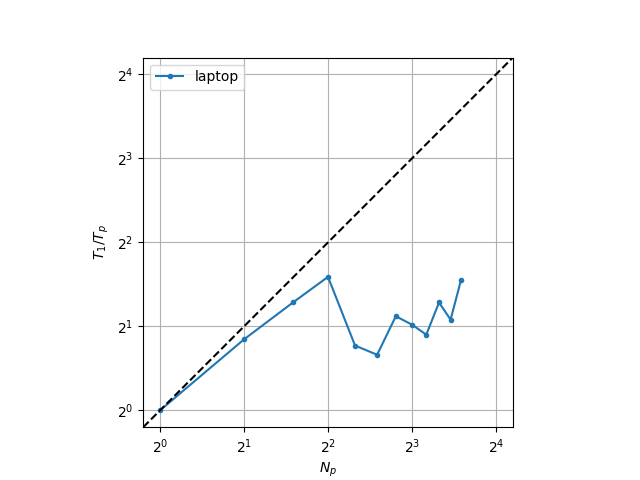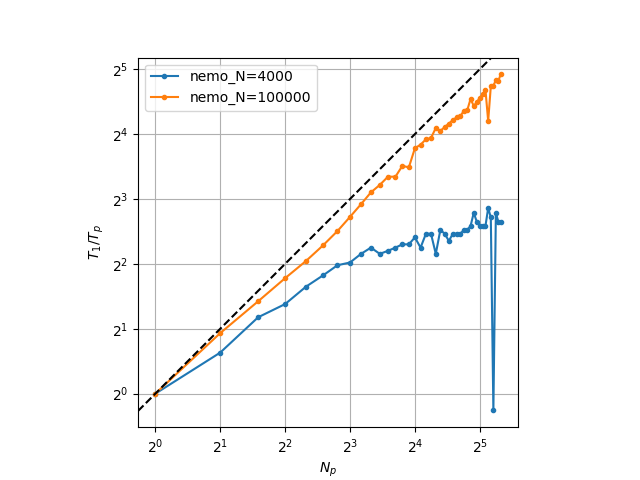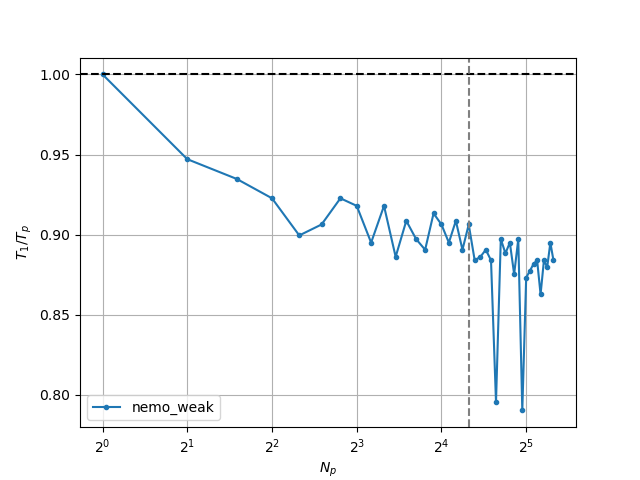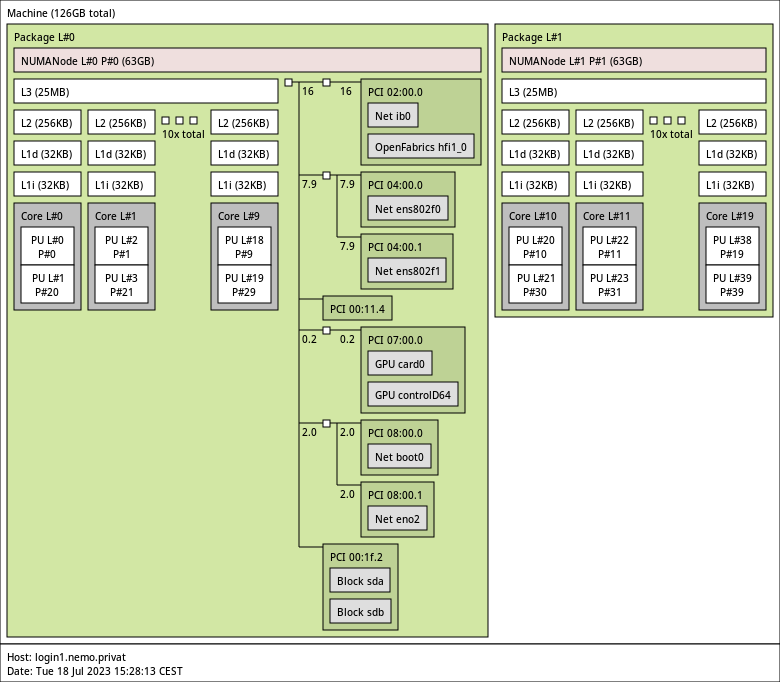Here are the helper files for this section:
Strong scaling
A typical scaling metric in HPC is strong scaling, or the reduction of time-to-solution (TTS) when the number of processing units is increased, for a fixed problem size. It is usually plotted as the speedup \(T_1 / T_p\), where \(T_1\) is the TTS for a single process, and \(T_p\) for \(N_p\) processes, typically shown in base 2 log-scale. Below is an example of running the wave program with 40000 points, 8000 time steps, on an i7-1260P laptop processor, with up to 12 concurrent processes.

Here we can clearly see a fall off after 4 processes: this actually corresponds to the architecture of the 12th-generation Intel processors, which have both performance and efficiency cores (for the i7-1260P 4 and 8 respectively). When running on heterogeneous processing units, the faster cores have to wait for the slower ones, resulting in a loss of performance. This also shows that OpenMPI is configured (by default) to use the performance cores first.
These particularities, however, mean that a scaling analysis performed on a laptop, or a consumer computer, is unreliable: in addition to heterogeneity, hyperthreading, shared cache, OS overhead, other processes can affect performance measurement, particularily of multi-threaded applications. One needs to use a dedicated supercomputer where these factors are mitigated. Here, we show simulations on the Nemo supercomputer with up to 40 processes, 8000 time steps, one with 100000 points and one with 4000 points (total).

One can notice a significant scaling difference with the size of the problem, despite running the exact same code. The reason is that the finite difference computation of the second order space derivative is not an embarassingly parallel computation: communication, or data exchange, needs to occur between processes. When a problem is large, communications take a negligeable time compared to local computations, but a smaller problem, or more processors, means more communications compared to local computations.
Note: in contrast, the Velocity-Verlet (despite also being a central finite difference scheme) is embarassingly parallel: no communication needs to occur to update the particle positions and velocities once the acceleration is known.
Weak scaling
Strong scaling always suffers from the gradually increased cost of communications, which is why in scientific computing it is also recommended to look at weak scaling, or the time-to-solution evolution with a fixed workload per process. This is easy to setup for \(O(N)\) algorithms, since the workload varies linearly with the problem size. For non-linear algorithms, an expected, ideal, weak scaling curve can be derived. Our wave problem has \(O(N)\) scaling. Below is the curve for a workload of 10000 points per processor.

We can see our code hovering around 90% efficiency. One should aim to be as close to the ideal scaling curve (in our case a flat line at 100% efficiency) as possible.
Hardware topology
Knowing what kind of hardware your code is running on can be valuable information. On Linux, the lscpu, lspci, lsmem, lsusb and lsblk, ip address are extremely useful to probe the hardware, respectively the CPU, PCI(e) devices, RAM, USB devices, disks (block devices), and network interfaces. To go further, the package hwloc can help show a digestable diagram of computing resources. Here is for example Nemo’s hardware topology for a single node (the login node) extracted with the lstopo command:
